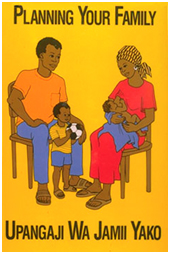|
The Pill's deadly affair with HIV/AIDS
Africa, AIDS, contraception, Why does HIV/AIDS strike more women than men globally? Why is sub-Saharan Africa the home of the world's largest heterosexual HIV/Aids epidemic? Why does Thailand have an HIV infection rate of over one-in-100 adults, while Japan's rate is 0.01 per cent and the Philippines' 0.02 per cent? One answer to these questions can be found in an article published this week by the Population Research Institute deeply implicating hormonal contraception in the AIDS epidemic. Joan Claire Robinson's resume of a larger report yet to be published shows that evidence has been piling up for two decades. She writes: More than 50 medical studies, to date, have investigated the association of hormonal contraceptive use and HIV/AIDS infection. The studies show that hormonal contraceptives-the oral pill and Depo-Provera-increase almost all known risk factors for HIV, from upping a woman's risk of infection, to increasing the replication of the HIV virus, to speeding the debilitating and deadly progression of the disease. A medical trial published in the journal AIDS in 2009-monitoring HIV progression by the need for antiretroviral drugs (ART)-saw "the risk of becoming eligible for ART was almost 70% higher in women taking the pills and more than 50% higher in women using DMPA [Depo-Provera] than in women using IUDS." Given that more than 100 million women worldwide use hormonal contraception, and that population control agencies and advocates insist that contraception is basic to the progress of developing countries, this is a very big problem. To answer the questions above:
On the other hand, Japan's HIV rate is, at 0.01%, one of the lowest in the world.10 In this context,
it is important to note that the birth control pill was illegal in Japan until 1999, and even today only 1% of
Japanese women use oral contraception. Similarly, the predominantly Catholic Philippines, with a longstanding popular
resistance to contraception, boasts an HIV "prevalence rate of only 0.02%." Because hormonal contraceptives increase almost all the known risk factors for infection. Basically, as one experts puts it, they "alter the microenvironment of the female" -- the linings of the reproductive tract and body fluids. For this reason, too, pill and Depo users are more likely to infect sexual partners. Some studies -- notably, those carried out in family planning clinics -- dismiss this link, and population activists continue to push contraception as an important way of containing the spread of AIDS. Says one of them: "Preventing unintended pregnancies among HIV-infected women who do not currently wish to become pregnant is an important and cost effective way of preventing new HIV infections of infants. … More must be done to ensure access to safe and effective contraception for HIV-infected women." If the results were not so tragic this ideological line would be laughable. Of course, there are other factors in the spread of HIV/AIDS, but this one makes a lot of sense. Watch out for the full report, to be published in the May/June issue of the PRI Review. * Thanks to Dorothy Vining for this tip.
|
